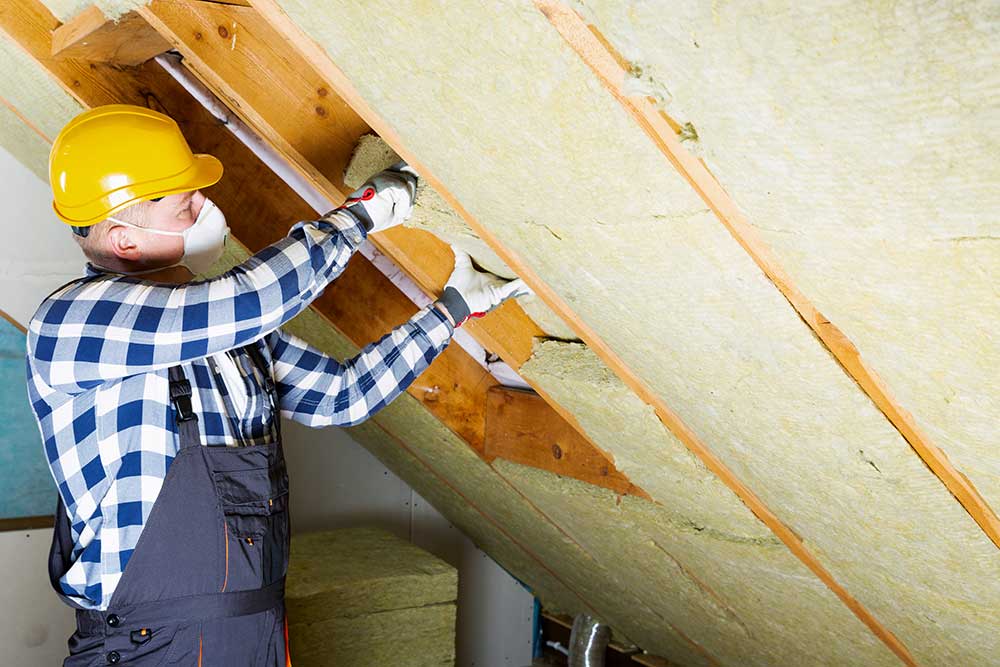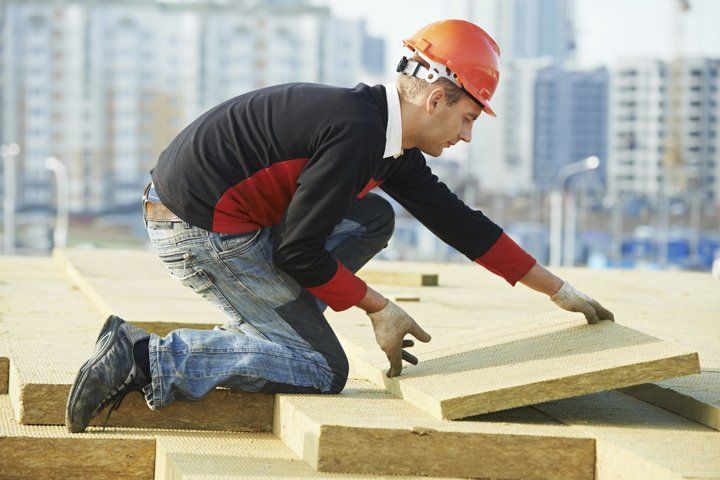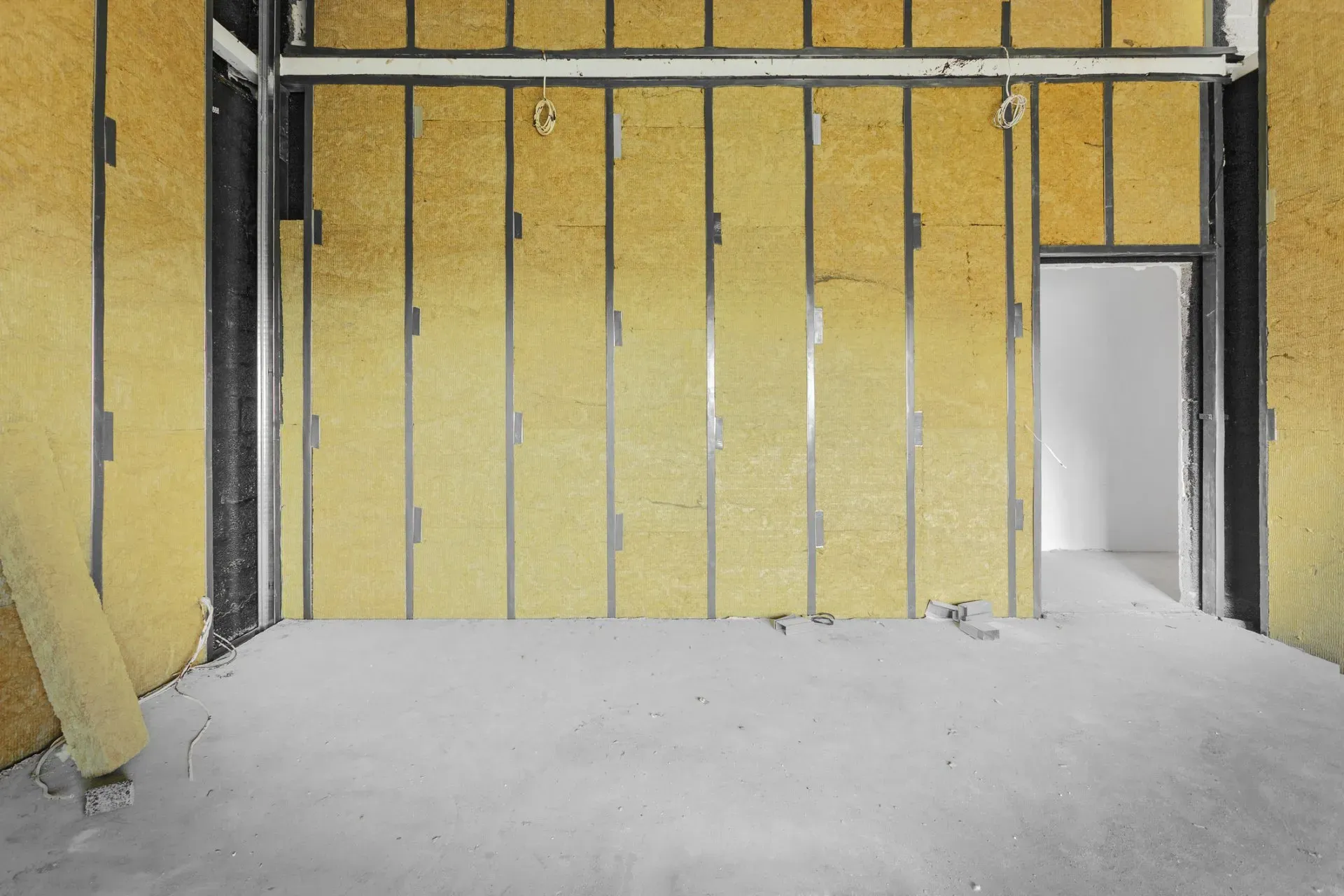Blog Layout
Signs Your Warehouse Needs New Insulation
admin • December 17, 2020

Buildings are not just our main form of shelter - they also provide safe places to conduct business or create products. And while the development of insulating materials has made climate control easier over the years, insulation doesn't last forever. If you notice any of these signs in your commercial building, your insulation needs an upgrade.
High Bills
Your energy bills will be higher in an industrial building than you are used to paying at home, but if you notice the payments are rising and your budget struggles to keep up, you may want to check your insulation.
If the insulation is starting to fail or was inadequate from the beginning, your heating and AC units will have to work harder to keep up the temperatures you want. This will reflect on your company's energy payments.
Inconsistent Temperatures
If your climate controllers have to work too hard for too long, they'll start to wear down as well. The insulation will continue to wear down and shift, which will make your energy units exert themselves even more, causing a vicious cycle until you take care of the problem.
If you find that the temperature controls can't effectively keep your building cool in the summer or warm in the winter, the time has come to replace your insulation.
Animal Problems
Insulation doesn't have to receive damage to stop working well; it just has to be moved out of position. Rodents and small animals like to crawl into insulation, especially in the roof space of buildings. Their presence will disrupt the function of the insulation as they shift it around to make nests and soil it with their waste.
If you find that creatures are building nests in the upper reaches of your building, you'll need to replace the insulation as soon as you can. Animal waste, reproducing pests, and other grime that comes from an infestation will degrade the quality of your insulation, so once you get them out of your building's roof, make sure to use pesticides and deterrents to keep them from returning and soiling the new inserts.
Drafty Days
If your building always seems to have a breeze, even if machines and temperature controls within are off, you might have holes in your insulation. When the insulation is not installed correctly or is not thick enough to stand up to the winds, it often will give way and allow drafts into your building. If this happens, you will need new installation to correct the issue and prevent future problems.
Wet Insulation
When your roof begins to leak or your vents experience blockage, you should check the insulation for moisture as well. Besides weakening the material and inhibiting its ability to regulate your building's temperature, wet insulation can also grow mold that will render the air difficult to breathe. If allowed to grow and flourish, the mold can grow toxic and damage your employee's health.
By the time you inspect the insulation and find it wet, it's too late to save the material. When you discover a roof leak and have to get a professional to redo it, go ahead and call an insulation specialist company as well and get it all out of the way at once.
Does your building exhibit one or more of these symptoms? You need to call in the experts to get your insulation in shape and your business back up to speed. At Breeding Insulation, we have the years of experience, trustworthy reputation, and customer orientation to guarantee you get the best service. Get in touch today to see how we can transform your buildings for the better.
By admin
•
October 14, 2021
Owning a home is a huge responsibility, but it's easy to overlook many parts of the home, especially the insulation. Insulation is usually out of sight and out of mind, but when you don't have enough insulation, you can waste lots of money. If you would like to know more, keep reading. Why Is Insulation Important? Insulation drastically helps improve your home's ability to withstand the transfer of heat. This means your home naturally stays cooler in the summer and warmer in the winter. As a result, you use less energy and money to keep your home heated and cooled. Insulation is specifically designed to have a high resistance to heat transfer, and some types of insulation are also good at blocking moisture. Unfortunately, in some older homes, enough insulation was not originally used, so you may not realize your home is lacking insulation. Signs your home doesn't have enough insulation include cold walls, drafts, mold and moisture inside the house, high energy bills, etc. What Types of Insulation Are Available? There are many different types of insulation, but homes only tend to use a handful. Home insulation often comes in rolls made from fiberglass, mineral wool, or plastic fibers. These rolls allow you to cut out pieces and lay them between the studs in the walls and the rafters in the ceiling. Some insulation is loose-fill fiberglass or cellulose insulation. This type of insulation is similar to the rolls, but it is blown into place. Spray foam insulation is also growing in popularity for homeowners. This is often viewed as one of the most effective types of insulation, but there are two different options: open-cell and closed-cell. Both are durable, but closed-cell spray foam insulation is also moisture-resistant. In some cases, reflective systems may need to be used. These are great for unfinished areas of the home, such as an unfinished garage or basement. The foil used helps better prevent the transfer of heat. What Does R-Value Mean? Insulation is measured in R-Value, and every building material has an R-value. Of course, since insulation is designed to withstand the transfer of heat, it is designed with a high R-value. Different types of insulation have different R-values, but the higher the value, the better it withstands the transfer of heat. Naturally, closed-cell spray foam has one of the highest R-values. The ideal R-value depends on two factors: where you live and where you are installing the insulation. For the most part, the hotter the climate, the lower R-value you need. For example, the majority of Tennessee is considered zone 4. In zone 4, the ideal R-value for attics is R38 to R60, and the ideal R-value for walls is R13 to R21, depending on the size of the wall. In the lower portion of Florida, however, R-value for the attic only needs to be R30 to R49. Where Should Insulation Be Added? Insulation should be added to many parts of your home. Typically, you want to add it to the attic, basement, every wall, every floor, and every ceiling. Attic insulation is particularly important at preventing heated air from escaping via the roof on cold days. It also helps prevent heat gain inside the house from the sun on hot days. In addition, you should add insulation to other parts of the house, such as any ductwork, pipes that transport heated and cooled water, and your water heater. This will help keep the air and water naturally warmer, so you use less energy. Insulation is easy to ignore, but it is important for reducing the transfer of heat inside your home. With a great R-value, you can save money on heating and cooling. If you would like to know more, contact us at Breeding Insulation Company, Chattanooga, Inc., today.
By admin
•
August 11, 2021
Heat is an important part of comfort. Not only do humans need it to survive, but it is often used for manufacturing. In these types of situations, the heat from outside and the heat created inside can be too much, leading to unpleasant working conditions or injury. Insulation, however, can help. Read on to learn more. How Does Insulation Work? Insulation works by affecting the rate at which heat transfers from one source to another. Heat transfers in three ways. First, conduction, which works like a stove. The burner heats up, and that heat is directly transferred to the metal pot to heat the pot. Radiation is another form of heat transfer, and it works like a fireplace. When you sit near a roaring fire, you feel the heat coming from the fire. This is because your body is cooler than the fire, so your body naturally steals heat, which creates that feeling of warmth. Last, convection occurs in the air and water. It happens when hot air or water rises, causing cold air and water to fall. Regardless of the type of heat exchange though, insulation can help slow the transfer which leads to fewer burns from exposed pipes and overheated rooms. Many materials offer some form of insulation, but insulation is specifically designed to have a high R-value. R-value refers to how well the material withstands the transfer of heat. The higher the value, the more it hinders heat transfer. The amount of insulation you want also depends on the type of heat transfer you have. For example, a lot of heat radiation from the sun is blocked by the exterior walls of your property. Insulation further helps slow the transfer to reduce the amount of heat gain, but the wall alone will help. On the other hand, a pipe that carries heated water or steam can and will transfer heat via conduction. Plus, the pipes are usually made from metal, which is a great conductor of heat. Therefore, insulation with a low R-value may not be enough to prevent burns. What Types of Insulation Exist? There are multiple types of insulation, and they come in many forms. Most forms of insulation are made from fiberglass, foam, or cellulose. Typically, foam insulation tends to have a higher R-value. A major reason for that is because spray foam can expand to fully seal the surface. Foam boards also have a high R-value, but they are pre-made so they won't expand to fill in every nook and cranny. With fiberglass insulation, you can choose rolls of insulation or loose-fill. Cellulose only comes in loose-fill insulation. Batts are great because they can just be laid down and rolled out to fill in the area you need insulation. However, for smaller areas, hard-to-reach areas, and areas that have been fully finished, loose-fill is a better option. The contractor can cut a small hole and blow insulation inside. In industrial settings, however, you also have a lot of exposed pipes and machinery that can get hot. A billet insulation system, however, is a great way to insulate those pipes. The insulation can be extruded to perfectly match the pipes you need to be covered. Not only can this reduce energy consumption, but it can reduce the risk of work-related burns. Insulation is a great way to reduce energy consumption and energy loss. Plus, with the right insulation, you can reduce the risk of workplace accidents. If you would like to know more, or if you need insulation services, contact us at Breeding Insulation Company, Chattanooga, Inc. today. We look forward to providing you with the highest quality of insulation.
By admin
•
June 9, 2021
If you are sick of expensive heating and cooling bills and pest infestations, consider spray foam insulation. If you would like to learn more, keep reading.
By admin
•
March 16, 2021
Sometimes, removable insulation covers are a better option to protect your insulation. Learn more about reasons to use custom removable covers.
By admin
•
February 18, 2020
Read this blog to learn more on what LEED certification means and how proper, professional insulation can help you towards your goal of achieving it.
BROWSE OUR WEBSITE
CONTACT INFORMATION
Phone:
Address:
2505 N Orchard Knob Ave. Chattanooga, TN 37406
Mailing Address:
P.O. Box 5187 Chattanooga, TN 37406
BUSINESS HOURS
Monday-Thursday, 7:30 a.m.-4:30 p.m.
Friday, 7:30 am - 3:30






Content, including images, displayed on this website is protected by copyright laws. Downloading, republication, retransmission or reproduction of content on this website is strictly prohibited. Terms of Use
| Privacy Policy





